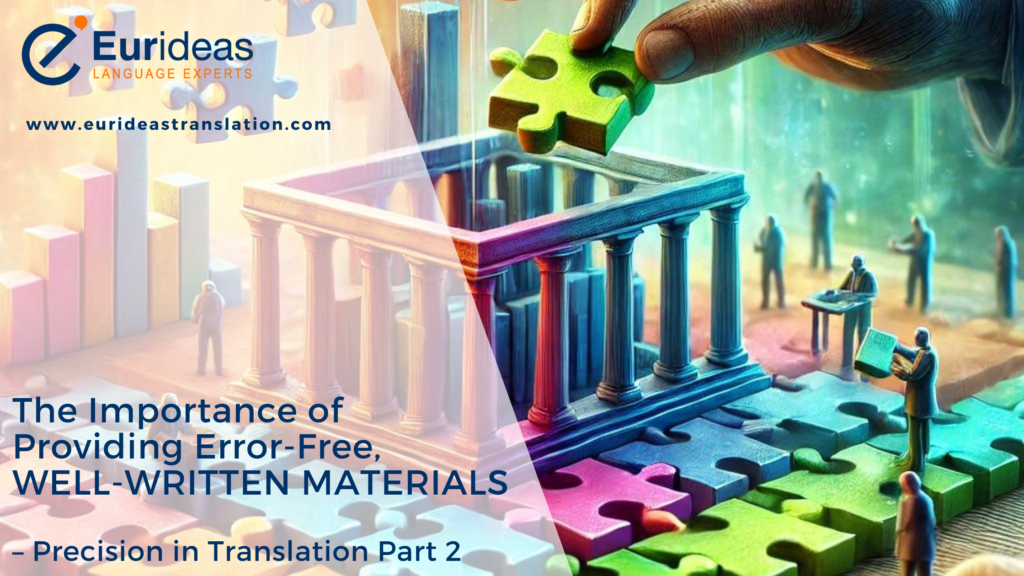The Importance of Providing Error-Free and Well-Written Materials – Precision in Translation Part 2

Providing materials that are free from errors and well-written is crucial for any successful translation project. Such aspects can significantly impact the accuracy and efficiency of the translation process. From typos in Word documents to missing sentences and problematic PDF conversions, let’s explore why high-quality source materials are essential for smooth and precise translations.
Typos and Translation Memory (TM) Matches
Imagine working with a Word document riddled with typos. Not only do such errors affect readability, but they also prevent Translation Memory (TM) tools from finding exact matches. A typo might seem minor, but it can lead to significant inconsistencies and reduce the overall quality of the translation. A consistent, error-free source text ensures that TM tools can do their job effectively, saving time and improving accuracy.
Missing Sentences and Clarifications
Occasionally, source documents arrive with incomplete sentences or missing sections. That disrupts the translation flow and necessitates back-and-forth communication for clarification. Each query can delay the project and lead to potential misunderstandings. Providing a complete and coherent source text from the outset helps avoid such interruptions and keeps the project on track.
Converting PDFs to Word Files
PDFs are often used for their convenience and fixed formatting, but they can be a nightmare to convert into workable Word documents. The conversion process can introduce errors, such as misaligned text, missing characters and formatting issues. Such problems make the document difficult to work with and increase the risk of translation errors. Whenever possible, it is best to provide original, editable files like Word documents to ensure that the text remains intact and is easy to translate.
The Value of High-Quality Source Materials
High-quality source materials streamline the translation process in several ways:
- Consistency: A consistent source text allows TM tools to function optimally, ensuring unified terminology and style.
- Efficiency: Complete and accurate source documents reduce the need for clarifications, speeding up the translation process.
- Accuracy: Providing clear and error-free source files minimises the risk of mistakes slipping in during translation
Conclusion
Providing well-organised, well-written, and error-free documents is essential for accurate and efficient translations. By making sure your documents are typo-free, complete and in an editable format, you can help your translation team deliver the best results. At Eurideas, we recognise the importance of such materials and are dedicated to delivering translations that adhere to the highest standards.
